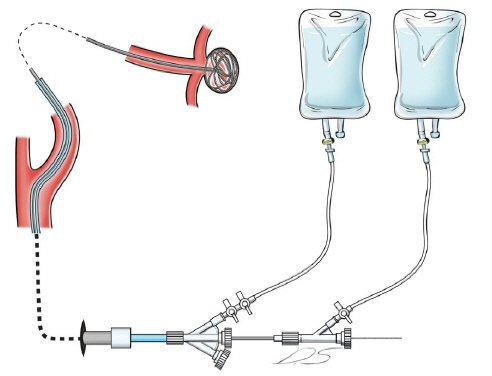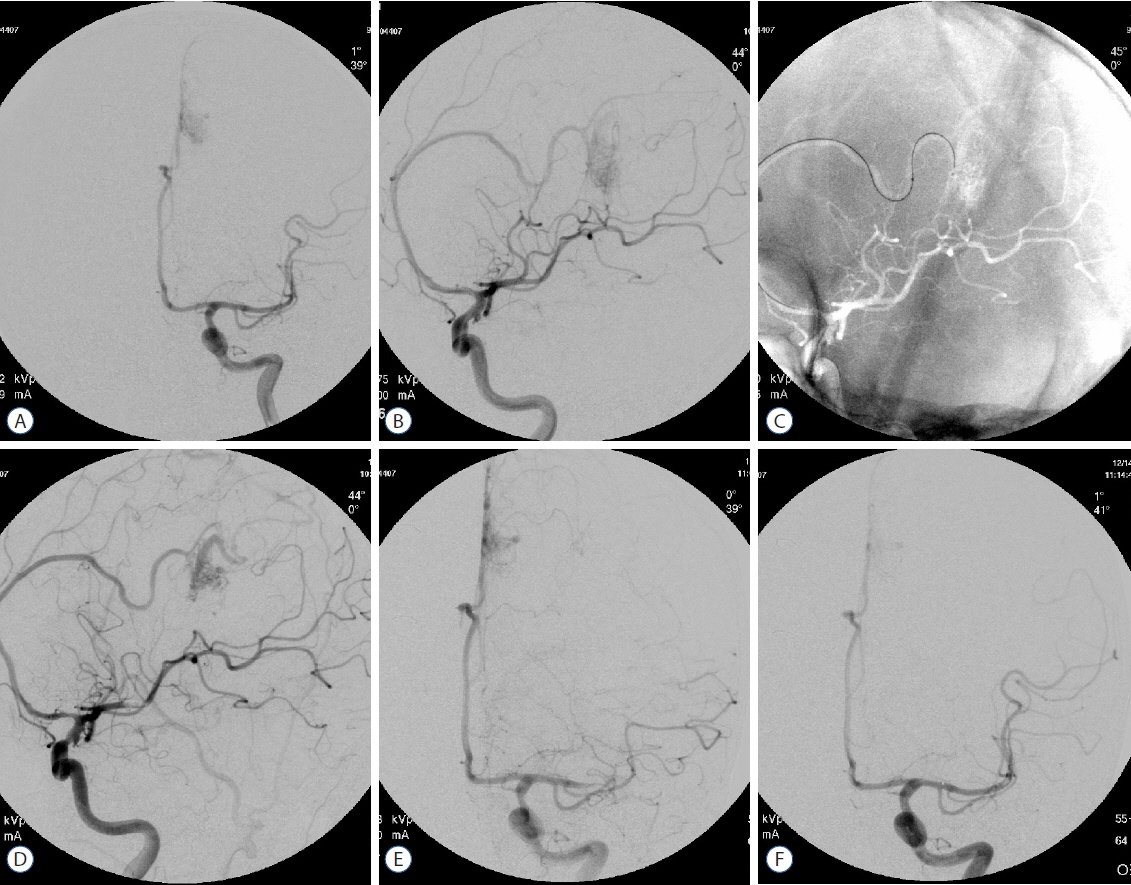J Korean Neurosurg Soc.
2017 Jul;60(4):471-474. 10.3340/jkns.2017.0101.001.
Invention of the Guide Catheter Irrigation Monitoring Device for Neuroendovascular Therapy
- Affiliations
-
- 1Department of Neurology, Adnan Menderes University, Aidyn, Turkey.
- 2Department of Neurosurgery, Bucheon Hospital, Soonchunhyang University College of Medicine, Bucheon, Korea. bumtkim@schmc.ac.kr
- 3Depatment of Neurosurgery, Adnan Menderes University, Aidyn, Turkey.
- KMID: 2387886
- DOI: http://doi.org/10.3340/jkns.2017.0101.001
Abstract
OBJECTIVE
The thromboembolic events during neuroendovascular therapy (NET) are the major complications of concern that can be occasionally fatal. The thrombotic occlusion of the guide catheter for NET is thought to be the risk of the thromboembolic events. We have developed an idea for inventing the monitoring system of the continuous irrigation through the guide catheter. We herein present a unique invention of the guide catheter irrigation monitoring device.
METHODS
We have developed ideas for preventing the thrombotic occlusion of the guide catheter. In order to design a convenient device working in the practical use, we have consulted and shared the ideas with the electrical engineers about putting the invention.
RESULTS
The guide catheter irrigation monitoring device (GCIMD) consisted of three parts of optical sensor, main body and electric adapter. In brief, the basic principles of working of the GCIMD are as follows. The optical sensor is attached to the dripping chamber of the line to irrigation solution. The main body had the small light and speaker to make an alarm sounds. The sensor monitors the dripping of flush solution. If the dripping stops more than three seconds, a warning alarm has been activated. So, the operating physicians can concentrate and check the guide catheter irrigation. After the use of the GCIMD, there was no major thromboembolic complication in conjunction with the thrombotic occlusion of the guide catheter in our institute.
CONCLUSION
We have developed a brilliant invention of the GCIMD for NET.
Keyword
MeSH Terms
Figure
Reference
-
References
1. Ahn SH, Prince EA, Dubel GJ. Basic neuroangiography: review of technique and perioperative patient care. Semin Intervent Radiol. 30:225–233. 2013.
Article2. Bendszus M, Koltzenburg M, Burger R, Warmuth-Metz M, Hofmann E, Solymosi L. Silent embolism in diagnostic cerebral angiography and neurointerventional procedures: a prospective study. Lancet. 354:1594–1597. 1999.
Article3. Heiserman JE, Dean BL, Hodak JA, Flom RA, Bird CR, Drayer BP, et al. Neurologic complications of cerebral angiography. AJNR Am J Neuroradiol. 15:1401–1407. discussion 1408–1411. 1994.4. Jurga J, Nyman J, Tornvall P, Mannila MN, Svenarud P, van der Linden J, et al. Cerebral microembolism during coronary angiography: a randomized comparison between femoral and radial arterial access. Stroke. 42:1475–1477. 2011.5. Kaufmann TJ, Huston J 3rd, Mandrekar JN, Schleck CD, Thielen KR, Kallmes DF. Complications of diagnostic cerebral angiography: evaluation of 19,826 consecutive patients. Radiology. 243:812–819. 2007.
Article6. Omran H, Schmidt H, Hackenbroch M, Illien S, Bernhardt P, von der Recke G, et al. Silent and apparent cerebral embolism after retrograde catheterisation of the aortic valve in valvular stenosis: a prospective, randomised study. Lancet. 361:1241–1246. 2003.
Article7. Shin DS, Kim BT. Basic endovascualr techniques: Coil embolization of aneurysms. Kim BT, editor. Essentials of Neurosurgical Procedures and Operations. ed 1. Seoul: Panmun;2015. p. 133–142.8. Willinsky RA, Taylor SM, TerBrugge K, Farb RI, Tomlinson G, Montanera W. Neurologic complications of cerebral angiography: prospective analysis of 2,899 procedures and review of the literature. Radiology. 227:522–528. 2003.
Article9. Yilmaz A, Ozkul A, Shin DS, Im SB, Yoon SM, Kim BT. Morphological assessment of cadaveric radial, brachial and subclavian arteries: a neurointerventional approach. J Korean Neurosurg Soc. 58:499–503. 2015.
Article
- Full Text Links
- Actions
-
Cited
- CITED
-
- Close
- Share
- Similar articles
-
- Neuroendovascular Therapy-Current Technical Advancement
- Experience of Neuroendovascular Therapy for Peripheral Aneurysm of The Superior Cerebellar Artery: A Case Report
- Effectiveness of a postoperative continuous irrigation system via a catheter following implant-based breast reconstruction
- A Novel Training Method for Endovascular Clot Retrieval Using a Portable Vascular Model and Red Film
- A Study on Incidence of Bacteriuria according to Bladder Irrigation in Patients with Indwelling Catheter




